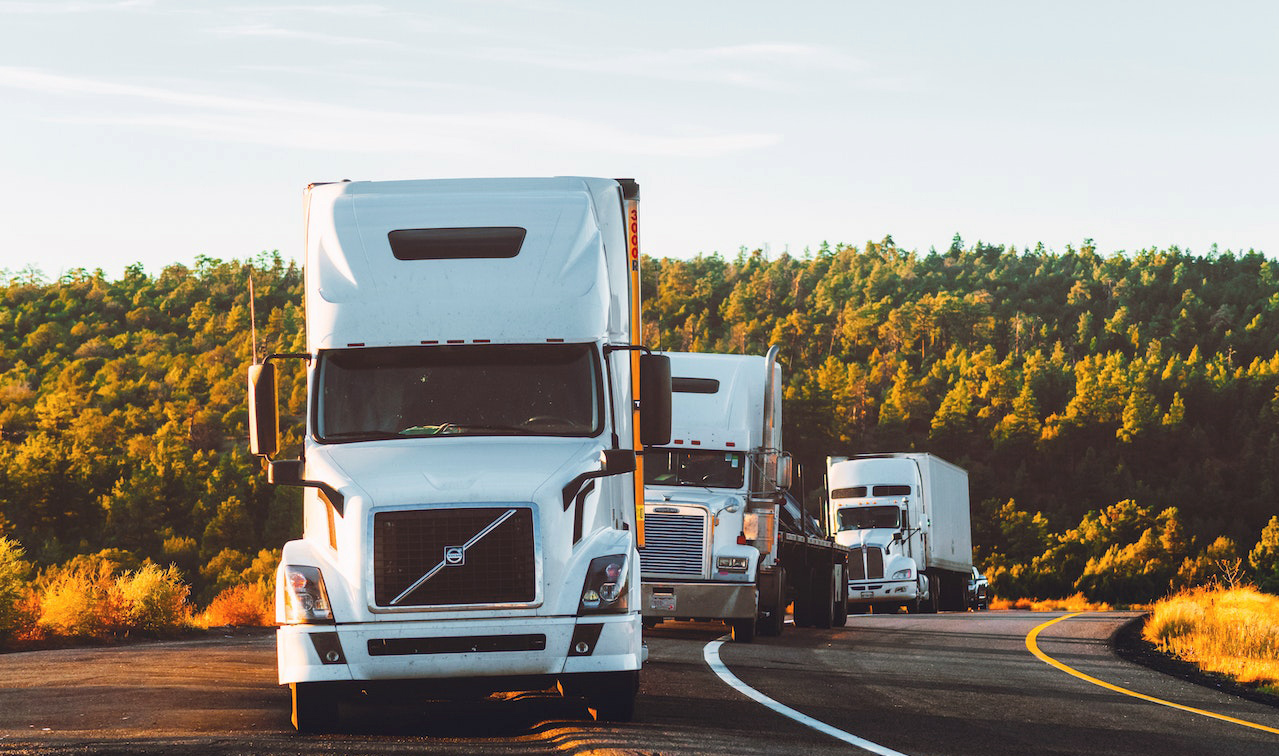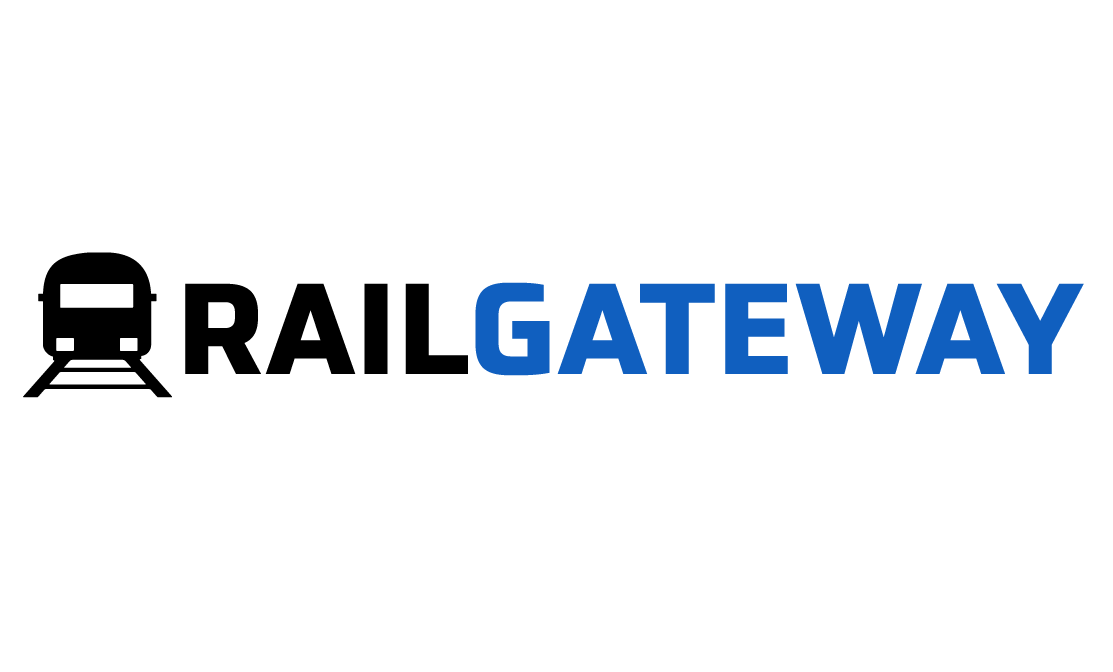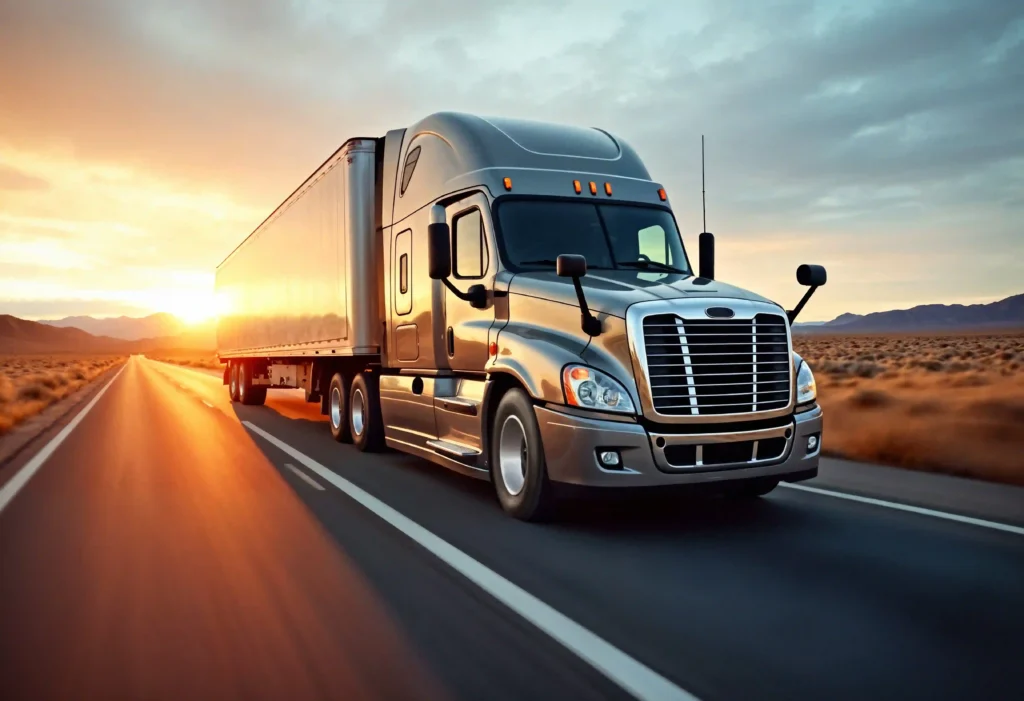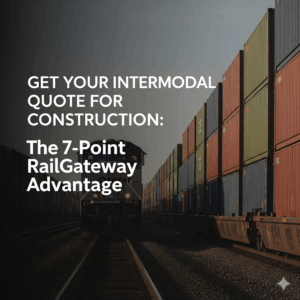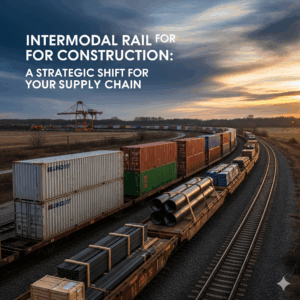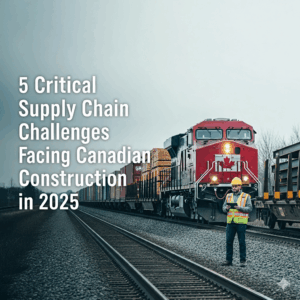Why FTL Shipping Is the Smartest Move for Canadian Shippers in 2025
In the complex world of logistics and freight transportation, one term continues to stand out in 2025 for its efficiency, reliability, and simplicity: FTL shipping. Whether you’re a seasoned supply chain professional or a small business owner trying to scale operations, understanding FTL shipping can revolutionize how you move goods across Canada and beyond. This guide is your go-to source for everything you need to know about FTL shipping—from its definition and benefits to when it makes the most sense for your business.
As customer expectations grow, lead times shrink, and fuel and labour costs climb, shippers are seeking solutions that offer fewer delays, less risk, and more control. FTL shipping delivers exactly that—and much more.
What Does FTL Shipping Mean?
FTL shipping stands for Full Truckload Shipping. It refers to the mode of transportation where an entire truck is reserved for a single shipment. Unlike LTL (Less-Than-Truckload) shipping, where multiple shippers share space in a trailer, FTL shipping is exclusively for one shipper’s cargo. That means the freight stays on one truck from origin to destination, without additional stops, transfers, or handling.
In 2025, FTL shipping has become increasingly popular for time-sensitive, high-volume, and high-value shipments that demand direct, uninterrupted delivery across vast distances.
Key Features of FTL Shipping
Understanding the core components of FTL shipping helps businesses evaluate its value. Here are the top features that define FTL shipping in today’s fast-paced freight environment:
- Single Shipper Use: You get the entire truck for your freight—no sharing space or risk of cargo mixing.
- Direct Route: Shipments travel directly from the point of origin to the final destination.
- Faster Transit Times: With no transfers or multiple delivery stops, FTL shipping is significantly faster.
- Enhanced Cargo Safety: Fewer handling points mean lower risk of damage, loss, or theft.
- Greater Weight and Volume Capacity: Ideal for large freight volumes, FTL shipping allows you to maximize load space.
- Better Rate Predictability: FTL pricing is usually a flat rate, making budgeting and quoting easier for larger freight loads.
Why FTL Shipping Is the Go-To Solution in 2025
The logistics landscape in 2025 is shaped by e-commerce expansion, global supply chain uncertainty, and a growing demand for faster deliveries. Amid these trends, FTL shipping stands out as a solution that provides reliability and control—two attributes essential for business resilience.
🔹 Speed and Predictability
With dedicated use of the truck, FTL shipping allows businesses to meet strict delivery windows. Since there are no intermediate stops or transfers, FTL transit times are more predictable and significantly faster than LTL or intermodal options for certain lane profiles.
🔹 Cost Efficiency for High-Volume Shipments
While FTL shipping might appear more expensive than shared transportation, it’s often the most cost-effective option for high-volume freight. When your cargo can fill an entire trailer—or comes close—it makes economic sense to book an entire truck rather than pay by the pallet or cubic foot.
🔹 Increased Control Over the Supply Chain
In 2025, supply chain visibility and control are non-negotiable. With FTL shipping, businesses enjoy full visibility over their shipment’s route, ETA, and delivery schedule. Real-time GPS tracking and advanced telematics offer peace of mind and immediate insight, reducing the risk of unexpected delays.
Use Cases: When to Choose FTL Shipping
Choosing FTL shipping isn’t just about volume—it’s also about value, urgency, and cargo sensitivity. Here are some common scenarios where FTL shipping makes perfect sense:
- Large-volume shipments that can fill a trailer or get close to full capacity
- Time-sensitive deliveries with no room for delay
- High-value or fragile goods that require minimal handling
- Perishable or temperature-sensitive items needing uninterrupted cold chain
- Dedicated freight contracts that require regular bulk shipments on set routes
For many industries—manufacturing, automotive, retail distribution, and even agriculture—FTL shipping is a logistics workhorse that keeps production and supply flowing efficiently.
The Impact of Technology on FTL Shipping in 2025
In 2025, FTL shipping is no longer a manual, paper-based process. Digital freight platforms, AI-powered route optimization, and IoT-enabled trailers have made FTL shipping more efficient than ever. With these innovations:
- Shippers can book and track FTL shipments in real-time.
- Carriers optimize fuel usage and route selection for faster, more sustainable deliveries.
- Freight audits and performance reviews become easier with digital logs and delivery analytics.
These tools enhance the appeal of FTL shipping, making it easier to manage and more integrated into today’s digital-first supply chains.
Common Equipment Used in FTL Shipping
Understanding the types of equipment involved in FTL shipping helps businesses choose the right trailer for their freight. Common options include:
- Dry Vans – The standard trailer used for most goods.
- Reefer Trailers – Used for perishable or temperature-sensitive shipments.
- Flatbeds – Ideal for oversized freight or machinery.
- Step Decks/Drop Decks – For taller freight requiring lower clearance.
RailGateway and other logistics providers can help determine the right FTL trailer type for your specific load, ensuring safety, compliance, and cost efficiency.
FTL Shipping in Canada: A Growing Opportunity
With Canada’s vast geography and critical trade routes between provinces and across the U.S. border, FTL shipping remains a vital transportation method. Whether moving goods from Toronto to Vancouver or exporting from Montreal to Chicago, FTL shipping offers unmatched control and speed.
Infrastructure investments, driver availability, and regional demand are shaping FTL shipping in Canada in 2025. More businesses are locking in dedicated truckload contracts to secure capacity and stabilize freight rates amid market volatility.
FTL shipping has evolved into a streamlined, technology-powered freight solution for modern businesses. Its ability to offer direct delivery, better control, reduced risk, and cost efficiency for large shipments makes it indispensable in the 2025 logistics landscape.
Whether you’re shipping domestically across Canada or cross-border into the U.S., understanding and leveraging FTL shipping can be the key to unlocking growth, reducing friction in your supply chain, and delighting your customers with faster, safer deliveries.
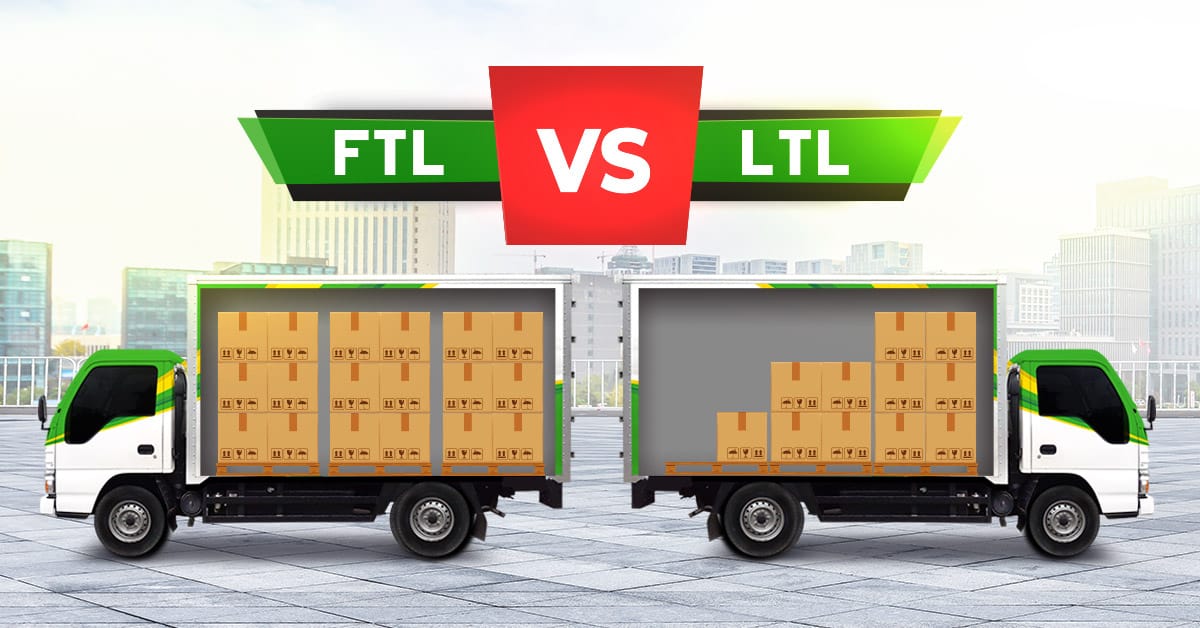
What is FTL Shipping?
FTL, or Full Truckload shipping, is a freight transportation method where an entire truck is dedicated to a single shipment. This means the truck carries only one consignee’s goods, rather than being shared with other shipments as in Less Than Truckload (LTL) shipping.
This method is best suited for businesses that need to transport large quantities of goods efficiently. Since the truck moves directly from the pickup location to the destination without making additional stops, it ensures faster transit times and reduces the risk of damage from excessive handling.
Key Characteristics of FTL Shipping
- Exclusive Use of the Truck – Your shipment occupies the entire truck, ensuring that no other goods are transported alongside yours.
- Direct Transit – The truck moves directly from the origin to the destination without additional pickups or drop-offs, making it a more streamlined and predictable shipping option.
- Ideal for Large Shipments – FTL is cost-effective when transporting large volumes, typically more than 10 pallets or over 15,000 pounds.
- Customized Shipping Solutions – FTL services often allow businesses to tailor shipping conditions, such as temperature-controlled freight for perishable goods.
Benefits of Choosing FTL Shipping
Opting for FTL shipping offers several advantages, especially for businesses with substantial freight needs.
Faster Transit Times
Since the truck is dedicated solely to your shipment, it travels directly to the destination, reducing transit times significantly. This is particularly beneficial for time-sensitive deliveries and just-in-time (JIT) inventory management.
Reduced Risk of Damage
With FTL Shipping, your goods are loaded once and remain on the same truck throughout the journey. This minimizes handling and the associated risks of damage or loss. Unlike LTL, where shipments are moved and reorganized at multiple stops, FTL reduces the chances of misplacement or breakage.
Cost-Effectiveness for Large Loads
While FTL might have a higher upfront cost, it becomes economical for large shipments. Paying for the entire truck can be more cost-effective than sharing space, especially when transporting goods in bulk. Additionally, FTL can help businesses save on per-unit shipping costs for high-volume goods.
Enhanced Security
The exclusive nature of FTL Shipping means fewer touchpoints and less exposure to potential theft or tampering, ensuring your goods remain secure throughout transit. Businesses shipping high-value products such as electronics, pharmaceuticals, or luxury goods often prefer FTL for this reason.
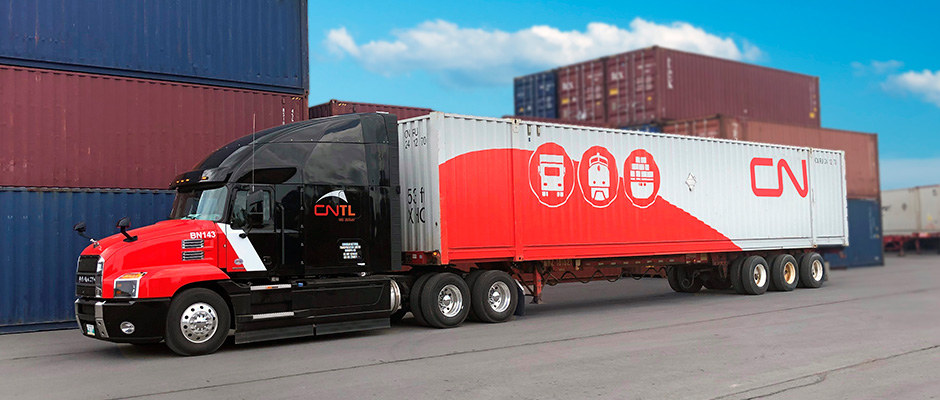
FTL vs. LTL Shipping
When shipping freight, businesses often face the choice between Full Truckload (FTL) and Less Than Truckload (LTL) shipping. The decision depends on factors like shipment size, budget, and urgency. While FTL is ideal for large, dedicated shipments, LTL offers a cost-effective solution for smaller loads that don’t require an entire truck. Understanding the differences can help businesses optimize their logistics and reduce shipping costs.
Choosing between FTL and LTL depends on various factors, including shipment size, budget, and delivery urgency.
Less Than Truckload (LTL) Shipping
- Shared Truck Space – Multiple shippers share space in one truck, making it cost-effective for smaller shipments.
- Multiple Stops – The truck makes several stops to load and unload goods from different shippers, which can increase transit times and handling risks.
- Ideal for Small to Medium Shipments – Best suited for shipments that don’t require a full truck, typically less than 10 pallets or under 15,000 pounds.
- More Complex Tracking – Due to the involvement of multiple shipments in one truck, tracking LTL shipments can be more complex compared to FTL.
When to Choose FTL Over LTL
- Large Shipments – If your freight can fill an entire truck or is close to it, FTL is more economical.
- Time-Sensitive Deliveries – FTL offers direct routes with no intermediate stops, ensuring faster delivery.
- High-Risk or Fragile Goods – Reduced handling in FTL minimizes the risk of damage, making it ideal for delicate or high-value items.
- Specialized Shipping Requirements – FTL is best for shipments requiring specific conditions, such as refrigerated freight or hazardous materials.
Factors Influencing FTL Shipping Costs
FTL shipping costs depend on several factors, including the weight and size of the shipment, distance traveled, and fuel prices. Businesses must consider these elements to budget accurately and optimize their logistics strategy. Additionally, seasonal demand and route accessibility can cause fluctuations in pricing, making it crucial to plan shipments strategically.
Understanding the cost components of FTL shipping can help in budgeting and optimizing logistics.
Shipment Weight and Size
Heavier and larger shipments utilize more of the truck’s capacity, influencing the overall cost. Carriers often calculate costs based on weight and dimensional factors, so optimizing packaging can lead to cost savings.
Distance Traveled
Longer distances require more fuel and time, impacting the shipping rate. If your shipment is crossing multiple states or borders, additional regulatory costs may apply.
Fuel Costs
Fluctuations in fuel prices can affect shipping costs, with surcharges applied during periods of high fuel prices. Businesses should consider using freight rate calculators or fuel surcharge indices to estimate costs accurately.
Route and Accessibility
Routes with difficult terrains or limited access can lead to additional charges due to increased complexity in delivery. Urban areas with heavy traffic congestion may also incur higher costs.
Seasonal Demand
Peak shipping seasons, such as holidays or major retail events, can drive up FTL rates due to high demand. Booking in advance can help lock in better rates and ensure availability.
Best Practices for FTL Shipping
Implementing the right strategies can help businesses maximize efficiency and reduce costs when using FTL shipping. From planning ahead to optimizing load configurations, businesses can streamline logistics and improve supply chain performance. Here are some key best practices to consider:
Plan and Book in Advance
Early planning allows for better rate negotiations and ensures truck availability, especially during peak seasons. Businesses that plan shipments ahead of time can avoid costly last-minute freight bookings.
Optimize Load Packaging
Efficient packaging maximizes space utilization, potentially reducing the number of trucks needed and lowering costs. Palletizing goods properly and minimizing wasted space can lead to more efficient transportation.
Choose Reliable Carriers
Partner with carriers known for their reliability and good track records to ensure timely and safe deliveries. Checking reviews, industry certifications, and performance metrics can help businesses select trustworthy logistics partners.
Leverage Technology
Utilize transportation management systems (TMS) to track shipments in real-time, manage routes efficiently, and maintain clear communication with carriers. Advanced logistics software can help businesses optimize shipping schedules and reduce transit delays.
Conduct Regular Freight Audits
Freight auditing helps businesses analyze shipping costs, detect billing discrepancies, and identify areas for cost reduction. Regular audits can lead to more efficient logistics operations and improved budget management.
Considering Alternative Shipping Solutions
While FTL shipping is ideal for large shipments, businesses seeking more cost-effective and sustainable options might consider intermodal rail shipping. Rail offers significant fuel efficiency, making it an attractive alternative for long-distance freight. By combining rail transport with trucking for the final leg of the journey, businesses can reduce costs and carbon emissions.
Services like Railgateway provide integrated intermodal solutions, ensuring a seamless connection between rail and truck transport. This approach can complement traditional FTL shipping, offering a reliable and eco-friendly option for companies looking to optimize their logistics strategy.
Additional Resources
NMFTA – How to Palletize a Shipment
https://nmfta.org/how-to-palletize-a-shipment
PT Chronos – The 4 Golden Rules of Pallet Optimization
https://www.ptchronos.com/blog/pallet-optimization-101-5-basic-rules
Peoria Production Solutions – Freight Palletizing Tips
https://www.peoriapros.com/warehousing/freight-palletizing-tips-to-maximize-safety-and-efficiency
Rapid Packaging – Understanding Safe Pallet Packaging and Shipping Guidelines
https://blog.rapidpackaging.com/understanding-safe-pallet-packaging-and-shipping-guidelines
Closing Lines
As 2025 brings new challenges and opportunities for freight and logistics, FTL shipping continues to prove itself as a powerful, efficient, and reliable solution for businesses across Canada and North America. From manufacturers and wholesalers to e-commerce retailers and agricultural exporters, anyone shipping freight at scale needs to consider FTL shipping as a core part of their logistics strategy.
Throughout this guide, we’ve uncovered how FTL shipping stands apart for its speed, safety, and cost-efficiency when compared to other freight options like LTL, intermodal, and courier services. For shippers dealing with large volumes of freight, high-value goods, or strict delivery schedules, the benefits of FTL shipping are undeniable.
Reaping the Benefits of FTL Shipping
The biggest advantage of FTL shipping is control. You maintain full authority over your shipment’s route, handling, timing, and security. This is particularly important in 2025, where the supply chain is more dynamic and interdependent than ever. Full truckload freight gives you a competitive edge by eliminating many of the risks that come with shared transportation models.
When your business uses FTL shipping, you also benefit from:
- Faster delivery times: Because there are no mid-route stops or transfers, your cargo arrives sooner.
- Greater cargo security: With fewer hands touching your shipment, the chance of damage or loss is significantly reduced.
- Streamlined scheduling: You choose the pickup and delivery windows, which simplifies warehouse and inventory planning.
- Reduced per-unit costs for large shipments: FTL becomes cost-effective as your freight volume increases.
These benefits compound when you ship consistently across long distances, especially between provinces or into the U.S. If your freight meets the volume and weight requirements, FTL shipping is often the most economical way to move it.
FTL Shipping and Canadian Supply Chains in 2025
In Canada, logistics providers are seeing a steady rise in demand for FTL shipping as businesses look to mitigate the unpredictability of today’s supply chains. Whether you’re shipping goods from Toronto to Calgary, Vancouver to Montreal, or to key U.S. cities like Detroit or Buffalo, FTL shipping allows for smoother, faster, and safer transportation.
Key Canadian industries using FTL shipping in 2025 include:
- Retail and eCommerce: Especially those replenishing distribution centers or shipping in bulk to stores.
- Automotive and Industrial: Transporting parts and machinery without unnecessary delays or handling.
- Agriculture and Food Services: Moving perishables and high-volume goods efficiently across provinces.
- Healthcare and Pharmaceuticals: Where timing and safety are paramount for sensitive freight.
As transportation infrastructure continues to improve across Canada, and digital freight tools become more accessible, FTL shipping will only grow in importance and efficiency.
Technology and Optimization in FTL Shipping
One of the most transformative aspects of FTL shipping in 2025 is the integration of technology. Transportation Management Systems (TMS), real-time GPS tracking, electronic logging devices (ELDs), and digital freight marketplaces have all made booking, monitoring, and managing FTL shipping easier and more transparent than ever.
Modern FTL solutions offer:
- Route optimization to reduce fuel consumption and improve delivery accuracy.
- Automated scheduling tools that allow for real-time pickup and drop-off coordination.
- End-to-end tracking, giving shippers full visibility from dispatch to delivery.
- Carrier performance analytics, which help you evaluate cost, reliability, and on-time rates.
This level of control, transparency, and intelligence makes FTL shipping far more than just a method of transportation—it becomes a strategic advantage.
When Not to Use FTL Shipping
While FTL shipping is excellent for large, time-sensitive, or fragile freight, it’s not always the right solution. If your shipments are smaller, less frequent, or non-urgent, you may benefit from LTL or intermodal options instead. The best approach is to evaluate the volume, weight, destination, and time requirements of your freight on a case-by-case basis.
That said, if you’re approaching 10 pallets or more, or if your freight exceeds 15,000 lbs, you’re likely entering the break-even point where FTL shipping becomes more cost-effective and efficient than LTL.
Choosing the Right FTL Carrier
Partnering with a reliable, responsive, and experienced FTL shipping provider is critical. In 2025, businesses need more than just a truck—they need expertise, flexibility, and transparency.
When choosing a provider for FTL shipping, look for:
- Experience in long-haul and cross-border freight
- Strong driver network and fleet management
- Real-time tracking and communication tools
- Competitive rates without hidden fees
- Responsive customer service that prioritizes your needs
A trusted partner helps you manage costs, avoid delays, and resolve issues quickly.
Get a Competitive Edge with RailGateway
When it comes to FTL shipping across Canada, working with a logistics partner who understands the nuances of your business can make all the difference. That’s where RailGateway comes in.
With decades of intermodal and full truckload freight expertise, RailGateway helps businesses ship smarter—not harder. Whether you’re new to FTL shipping or simply looking for better rates, service, and visibility, RailGateway has the tools and knowledge to streamline your logistics strategy.
We provide:
✅ Access to a reliable carrier network
✅ Competitive pricing for high-volume freight
✅ Integrated freight solutions tailored to your needs
✅ Industry-leading customer support from Canadian experts
Ready to simplify your FTL shipping operations and gain control over costs and schedules? Contact RailGateway today for a free quote or to speak with one of our logistics specialists about how we can support your shipping goals in 2025 and beyond.
